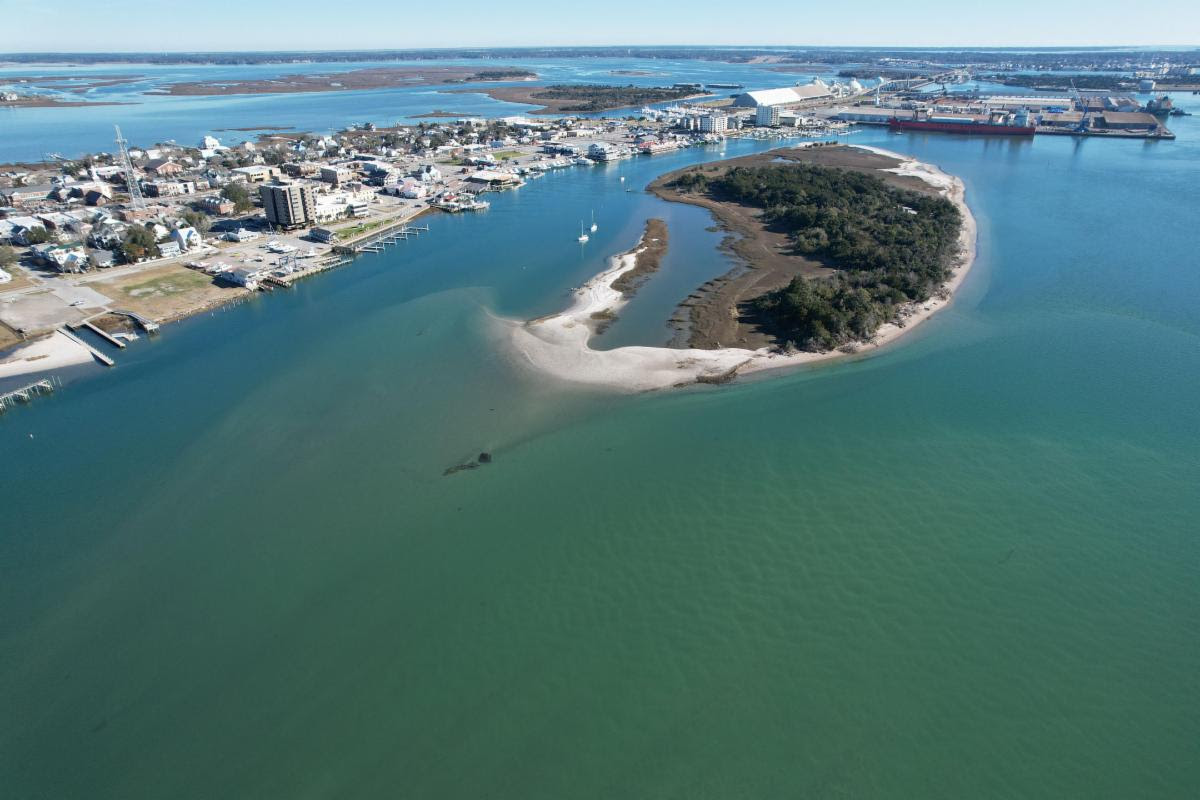
Construction is expected to begin this year on a project to increase the resiliency of downtown Morehead City by protecting Sugarloaf Island from continual shoreline erosion, officials announced Wednesday.
City officials, North Carolina Coastal Federation and Sea & Shoreline, a Florida-based aquatic restoration firm, are working together on the project with Currituck County-based Quible & Associates and other experts to identify and design the best shoreline stabilization methods for the island that balance shoreline protection, public uses and natural resource conservation.
Supporter Spotlight
Sugarloaf Island is parallel to the downtown waterfront, separated by Harbor Channel. Currently, the seaward shoreline of the Island is eroding, leaving uprooted trees and vegetation behind. Add to that wave exposure and swift currents eroding the shoreline, sweeping nutrient-rich sediment into the water column, degrading water quality, and filling in navigational channels, officials said.
“We are excited to partner with not only the Federation and the City on this project, but also other local companies to restore our beloved island,” Brian Henry, director of Sea & Shoreline’s North Carolina and South Carolina offices, said in a statement.
The $2 million project funded in the latest state budget is expected to do the following: stop erosion, tree loss and shorebird habitat loss; increase the shoreline, fish habitat, carbon sequestration, and fishing and ecotourism opportunities; and enhance seagrass, water quality and the coastal resilience of Morehead City.
“Protecting and restoring our island has been a priority to this City for years and now, thanks to the State Legislature, we finally have the funding to make it happen. We’re looking forward to working closely with the professionals from Sea & Shoreline and the North Carolina Coastal Federation to see this project come to fruition,” Morehead City Mayor Jerry Jones said in a statement.
One method being considered is a hybrid approach using offshore wave attenuation devices, or WADs, to reduce erosion, seagrass plantings to stabilize the sediment and create essential fish habitat, and a living shoreline to build salt marsh and upland vegetation.
Supporter Spotlight
The restoration techniques will not impede normal vessel traffic because they will be installed in areas too shallow for boats to navigate safely at high speeds. Wave attenuation structures will be staggered so that fishing can occur in and around the structures.
“This is a wonderful opportunity to protect and restore Sugarloaf Island so that it continues to provide important recreation, fish habitat, and storm protection values,” said Coastal Federation Executive Director Todd Miller. “The Federation supports and appreciates the financial support provided by the North Carolina General Assembly to Morehead City to allow this project to move forward in preventing this island from washing away.”







